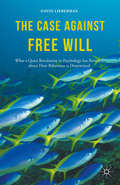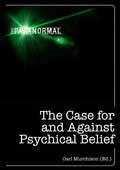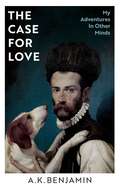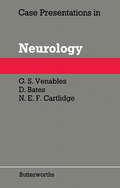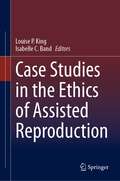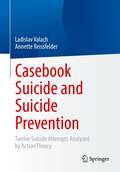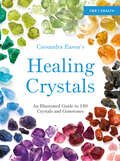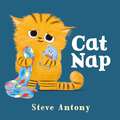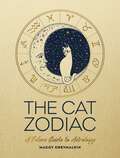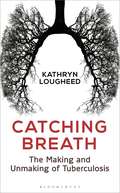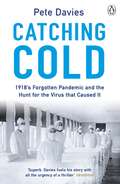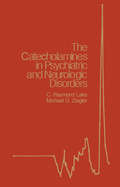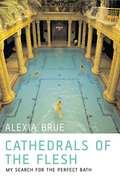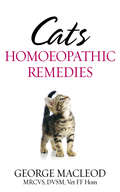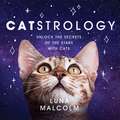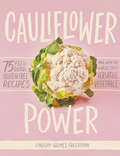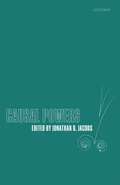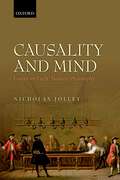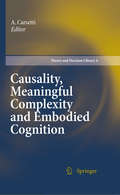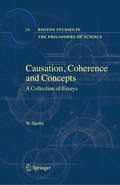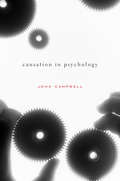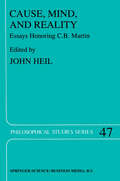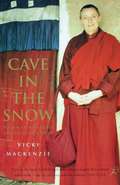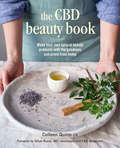- Table View
- List View
The Case Against Free Will: What a Quiet Revolution in Psychology has Revealed about How Behaviour is Determined
by David LiebermanDo judges' decisions depend on how long it is since they ate their lunch? Is the best place for a woman to seduce a man on a rickety bridge? Does free will really exist? This book explores how our genes and experiences determine our behaviour as well as discussing the implications determinism may have on personal responsibility and morality.
The Case for and Against Psychical Belief (The\paranormal Ser.)
by Carl MurchisonThe Paranormal, the new ebook series from F+W Media International Ltd, resurrects rare titles, classic publications and out-of-print texts, as well as new ebook titles on the supernatural-other-worldly books for the digital age. The series includes a range of paranormal subjects from angels, fairies and UFOs to near-death experiences, vampires, ghosts and witchcraft.Fourteen Essays On Psychical Phenomena And Mediumship By Fourteen Authors, including Sir Oliver Lodge, Houdini, Mary Austin And Sir Arthur Conan Doyle.
The Case for Love: My Adventures In Other Minds
by A K BenjaminAn exhilarating journey into the unfathomable depths of the human mind, from the acclaimed author of Let Me Not Be Mad.What does it take to care for a stranger? Really care.The Case for Love is a reflection on a career treating patients with brain trauma - people whose thoughts and feelings are largely unknowable - and how and why those treatments failed.It is a reconstruction of three haunting cases in which the patients were tragically misunderstood - and an attempt through the power of the imagination to understand and make amends.It then describes the author's abandonment of his career and his tumultuous quest for healing and redemption.It is also a story of intimate relationships, pets, fatherhood and heartbreak, culminating in a moment of psychedelic transcendence and rebirth.It is about the overpowering need for connection - and how, increasingly, we are trapped in ourselves.It is a meditation on empathy and an act of atonement.It is a unique, hybrid work of clinical case study and pure invention that destroys the boundary between fact and fiction in order to bring us face-to-face with the shocking, liberating truth.__________Praise for Let Me Not Be Mad'Imagine a gonzo Oliver Sacks communing with Edward St Aubyn's Patrick Melrose, R.D. Laing and the spirit of Kafka's 'The Country Doctor', and you still won't quite have the flavour of this wild and strikingly original book' William Fiennes'Stunning: clever, troubling, restless, honest, dishonest; one of the best portraits of madness and clinical practice I've read' Olivia Laing'A perfectly extraordinary - not to mention extraordinarily perfect - tense Hitchcockian psychodrama. I have rarely read a more haunting and enthralling account of a descent into madness. An important, profound and fascinating book' Stephen Fry'Blackly comic, warmly compassionate, a unique take on the human mind offering uncomfortable universal truths' Stewart Lee'A slow-burn belter of a book ... terrific ... so finely described, the result has the terse force of a classic short story' Roddy Doyle'Exhilarating ... dazzling ... a miraculous feat' Guardian
Case Presentations in Neurology
by D. Bates G. S. Venables N. E. CartlidgeCase Presentations in Neurology presents a selection of case histories demonstrating how patients with often quite simple problems may present and to bring out aspects of their diagnosis and management. All the patients presented to the Department of Neurology including those with more obscure diagnoses. The book consists of 12 exercises, each of six cases broadly corresponding to the style of the MRCP (UK) written case history papers. Each case is set out with the history and physical findings given first. There follows either a series of questions or true/false statements on one side of the page which the reader should attempt before continuing on to the answer section on the other side. There then follows a short discussion about each case and a single reference. This book is intended for those doctors studying for higher professional qualifications such as the MRCP, although it may be of interest and use to medical students approaching their final examinations.
Case Studies in the Ethics of Assisted Reproduction
by Louise P. King Isabelle C. BandThis book evaluates some of the most common ethical issues confronted by reproductive endocrinologists, embryologists, and their teams. The authors apply core ethical principles and approaches to problem solving to each of the cases raised. This work is a guide for both those on the front lines of patient care as well as for students in the field, whatever their background. By outlining sample cases, the book is an instigator for ethical discussions among ethicists, medical practitioners and students.
Casebook Suicide and Suicide Prevention: Twelve Suicide Attempts Analyzed by Action Theory
by Ladislav Valach Annette ReissfelderA young woman is abandoned by her boyfriend, an older man retires and feels worthless and lonely, a young man learns that his wife is having an extramarital affair. They all see suicide as the only solution.Usually, after a suicide attempt, people are treated in a hospital, where professionals try to work out the underlying psychiatric illness. Ladislav Valach and Annette Reissfelder, however, argue that suicide is not an illness but an action. Since this understanding is based on a high regard for everyday accounts of one's own experiences, the suicidal persons are given the stage in this book.The textbook presents twelve different cases after a suicide attempt. In the analysis of the conversations, attention is paid to the theory of action in everyday life. By presenting the long-term, medium-term and short-term concerns of the patients or the actions in the stories, practitioners gain a detailed insight into the underlying causes of the suicidal act and its treatment.
Cassandra Eason’s Illustrated Directory of Healing Crystals
by Cassandra EasonCassandra Eason's unique directory offers accessible information on more than 150 crystals.
Cat Nap
by Steve AntonyMeet a cat, in need of a nap! The start of an exciting new picture book series for young children - and their parents! From award-winning author and illustrator, Steve Antony.Cat Nap marks the launch of a new, young, character-led picture book series from award-winning Steve Antony, the best-selling creator of Please Mr Panda, a series that has sold over 1 million copies Worldwide!This little cat needs a nap, but it’s hard to find time for sleep when you’re busy playing! Will he ever close his eyes?Style, simplicity and humour combine to make this original and engaging look at naptime a real must-have for all young children and their grown-ups. Fresh, funny and utterly relatable, with a playful, pitch-perfect text. The start of a brilliant new series that will delight young and old, from an undeniable picture book talent.For more toddler milestone moments:Bird BathHippo PottyChick Pea
The Cat Zodiac: Astrology for Your Cat
by Maggy GreymalkinLong have humans looked to the stars for guidance in their lives, but what about the destiny of their cats? On the surface, cats may seem to care about very little other than finding the sunniest spots to nap or the best boxes to hide in, but they have higher paths, greater purposes and truer callings in life. Providing insight into the signs, the stars and the elements and how they affect every aspect of a cat’s life, with horoscopes, tarot and paw readings for mystic moggies, this book is the perfect guide to the secrets of the cat zodiac.
Catching Breath: The Making and Unmaking of Tuberculosis
by Miss Kathryn LougheedTuberculosis is an ancient disease, but it's not a disease of history. With more than a million victims every year – more than any other disease, including malaria – and antibiotic resistance now found in every country worldwide, tuberculosis is once again proving itself to be one of the smartest killers humanity has ever faced. But it's hardly surprising considering how long it's had to hone its skills. Forty-thousand years ago, our ancestors set off from the cradle of civilisation on their journey towards populating the planet. Tuberculosis hitched a lift and came with us, and it's been there ever since; waiting, watching, and learning. In The Robber of Youth, Kathryn Lougheed, a former TB research scientist, tells the story of how tuberculosis and humanity have grown up together, with each being shaped by the other in more ways than you could imagine. This relationship between man and microbe has spanned many millennia and has left its mark on both species. We can see evidence of its constant shadow in our genes; in the bones of the ancient dead; in art, music and literature. Tuberculosis has shaped societies - and it continues to do so today.The organism responsible for TB, Mycobacterium tuberculosis, has had plenty of time to adapt to its chosen habitat – human lungs – and has learnt through natural selection to be an almost perfect pathogen. Using our own immune cells as a Trojan Horse to aid its spread, it's come up with clever ways to avoid being killed by antibiotics. But patience has been its biggest lesson - the bacterium can enter into a latent state when times are tough, only to come back to life when a host's immune system can no longer put up a fight. Today, more than one million people die of the disease every year and around one-third of the world's population are believed to be infected. That's more than two billion people. Throw in the compounding problems of drug resistance, the HIV epidemic and poverty, and it's clear that tuberculosis remains one of the most serious problems in world medicine. The Robber of Youth follows the history of TB through the ages, from its time as an infection of hunter-gatherers to the first human villages, which set it up with everything it needed to become the monstrous disease it is today, through to the perils of industrialisation and urbanisation. It goes on to look at the latest research in fighting the disease, with stories of modern scientific research, interviews doctors on the frontline treating the disease, and the personal experiences of those affected by TB.
Catching Cold: 1918's Forgotten Tragedy and the Scientific Hunt for the Virus That Caused It
by Pete Davies'Superb . . . Rich in interest and truly alarming . . . This is a book that deserves to be read' OBSERVERThe world is no stranger to the fight needed to tackle a pandemic.In 1918, the Spanish Flu killed over forty million people - more Americans than all the wars the US fought in the entire twentieth century. Ever since, scientists have agreed that the next pandemic is not a question of if, but when.And they were right.As our planet faces another devastating pandemic, Catching Cold tells the extraordinary story of the urgent and unrelenting global effort to try to protect us.From the inhospitable wastes of the Norwegian Arctic circle to the frenzied food markets of Hong Kong, Davies tracks a small community of experts, working against the clock to uncover what turns a virus into a worldwide disaster, and how best to prevent it - because knowing something's coming is not at all the same thing as being ready for it.
The Catecholamines in Psychiatric and Neurologic Disorders
by C. Raymond Lake Michael G. ZieglerThe Catecholamines in Psychiatric and Neurologic Disorders focuses on the contributions of catecholamines (CA) in the modulation of blood pressure, stress and exercise, body movements, memory, learning, emotions, thought processing, appetite, and mediation of psychotropic drug action.The selection first elaborates on the techniques for the assessment and interpretation of catecholamine measurements in neuropsychiatric patients and catecholaminergic response to stress and exercise. Discussions focus on noradrenergic response to isometric exercise, isotonic exercise, effect of acceleration on sympathetic activity, techniques for sympathetic nervous system evaluation, and measurements of CA and their metabolites in cerebrospinal fluid. The text then takes a look at urinary CA in behavioral research on stress; CA in anxiety disorders and mitral valve prolapse; and interaction with neurotransmitters in normal subjects and in patients with selected neurologic diseases. The selection examines noradrenergic responses in postural hypotension, norepinephrine, alcohol, and alcoholism, and catecholamine metabolism in anorexia nervosa. Topics include cerebral catecholamine metabolism in anorexia nervosa; central nervous system norepinephrine and voluntary alcohol drinking; and overview of norepinephrine in selected pediatric disorders.The book is a dependable reference for neuropsychiatrists and readers interested in the contributions of catecholamines on psychiatric disorders.
Cathedrals of the Flesh: My Search for the Perfect Bath
by Alexia BruePeople journey to Greece for the ruins, Turkey for the Hagia Sophia, and Russia for St. Peter's, but Alexia Brue travels with a different itinerary: to visit the baths. What starts off as an innocent vacation quickly becomes an obsession, as the author ventures to Turkey, Greece, Russia, Finland, and Japan to sample the range of bathing traditions the world has to offer. Caught up in the tide of travel and exploration and crossing paths with fellow travellers along the way, Alexia drifts further and further away from the life she left behind in New York City. Hoping to find a thriving local bath scene, she dips into hamams, banyas, saunas, and onsen, finding both disappointment and bliss. At once deeply personal and highly informative, full of intimacies, discoveries, and unexpected twists, CATHEDRALS OF THE FLESH is the candid and playful account of one woman's determination to follow her passion, ultimately inspiring readers to do the same.
Cats: Homoeopathic Remedies
by George MacleodThis book is written to satisfy the needs of the increasing numbers of cat lovers who are interested in alternative methods to treat the illnesses to which their pets may fall prey. This comprehensive guide introduces the principles of homoeopathy and the nature of homoeopathic remedies, explaining how remedies can be prepared and administered. There are informative sections on treating the different feline bodily systems and the specific diseases that cats may suffer from. There is also advice on treating common feline ailments such as parasites, wounds and injuries.
Catstrology: Unlock the Secrets of the Stars with Cats
by Luna MalcolmWith the help of a collection of sweet and hilarious cat pictures, CATSTROLOGY will unlock all the secrets of the stars that you need to know, including...- Each of the signs at their best and worst (and the perfect cat to illustrate them)- The common traits of each element and modality in the zodiac- What do you and your 'sister sign' have in common? Find out, with the perfect cat picture to complement it...- And of course: the right cat for you, based on your star sign!
Cauliflower Power: 75 Feel-Good, Gluten-Free Recipes Made with the World's Most Versatile Vegetable
by Lindsay Grimes FreedmanCauliflower really can do it all, and this book shows how this versatile veggie can be used in all your meals to make everything from blueberry muffins and a Mediterranean salad to cauliflower-crust pizza, Buffalo wings, tostadas, and gnocchi—even chocolate mousse and strawberry ice cream.
Causal Powers
by Jonathan D. JacobsCausal powers are ubiquitous. Electrons are negatively charged; they have the power to repel other electrons. Water is a solvent; it has the power to dissolve salt. We use concepts of causal powers and their relatives-dispositions, capacities, abilities, and so on-to describe the world around us, both in everyday life and in scientific practice. But what is it about the world that makes such descriptions apt? On one view, the neo-Humean view, there is nothing intrinsic about, say, negative charge, that makes its bearers have the power to repel other negatively charged particles. Rather, matters extrinsic to negative charge, the patterns and regularities in which negatively charged particles are embedded, fix the powers its bearers have. But on a different view, the anti-Humean view, causal powers are intrinsically powerful, bringing with them their own causal, nomic, and modal nature independent of extrinsic patterns and regularities-even fixing those patterns and regularities. This collection brings together new and important work by both emerging scholars and those who helped shape the field on the nature of causal powers, and the connections between causal powers and other phenomena within metaphysics, philosophy of science, and philosophy of mind. Contributors discuss how one who takes causal powers to be in some sense irreducible should think about laws of nature, scientific practice, causation, modality, space and time, persistence, and the metaphysics of mind.
Causal Powers
Causal powers are ubiquitous. Electrons are negatively charged; they have the power to repel other electrons. Water is a solvent; it has the power to dissolve salt. We use concepts of causal powers and their relatives-dispositions, capacities, abilities, and so on-to describe the world around us, both in everyday life and in scientific practice. But what is it about the world that makes such descriptions apt? On one view, the neo-Humean view, there is nothing intrinsic about, say, negative charge, that makes its bearers have the power to repel other negatively charged particles. Rather, matters extrinsic to negative charge, the patterns and regularities in which negatively charged particles are embedded, fix the powers its bearers have. But on a different view, the anti-Humean view, causal powers are intrinsically powerful, bringing with them their own causal, nomic, and modal nature independent of extrinsic patterns and regularities-even fixing those patterns and regularities. This collection brings together new and important work by both emerging scholars and those who helped shape the field on the nature of causal powers, and the connections between causal powers and other phenomena within metaphysics, philosophy of science, and philosophy of mind. Contributors discuss how one who takes causal powers to be in some sense irreducible should think about laws of nature, scientific practice, causation, modality, space and time, persistence, and the metaphysics of mind.
Causality And Mind: Essays On Early Modern Philosophy
by Nicholas JolleyCausality and Mind presents seventeen of Nicholas Jolley's essays on early modern philosophy, which focus on two main themes. One theme is the continuing debate over the nature of causality in the period from Descartes to Hume. Jolley shows that, despite his revolutionary stance, Descartes did no serious re-thinking about causality; it was left to his unorthodox disciple Malebranche to argue that there is no place for natural causality in the new mechanistic picture of the physical world. Several essays explore critical reactions to Malebranche's occasionalism in the writings of Leibniz, Berkeley, and Hume, and show how in their different ways Leibniz and Hume respond to Malebranche by re-instating the traditional view that science is the search for causes. A second theme of the volume is the set of issues posed by Descartes' innovations in the philosophy of mind. It is argued that Malebranche is once again a pivotal figure. In opposition to Descartes Malebranche insists that ideas, the objects of thought, are not psychological but abstract entities; he thus opposes Descartes' 'dustbin theory of the mind'. Malebranche also challenges Descartes' assumption that intentionality is a mark of the mental and his commitment to the superiority of self-knowledge over knowledge of body. Other essays discuss the debate over innate ideas, Locke's polemics against Descartes' theory of mind, and the issue of Leibniz's phenomenalism. A major aim of the volume is to show that philosophers in the period are systematic critics of their contemporaries and predecessors.
Causality, Meaningful Complexity and Embodied Cognition (Theory and Decision Library A: #46)
by A. CarsettiArturo Carsetti According to molecular Biology, true invariance (life) can exist only within the framework of ongoing autonomous morphogenesis and vice versa. With respect to this secret dialectics, life and cognition appear as indissolubly interlinked. In this sense, for instance, the inner articulation of conceptual spaces appears to be linked to an inner functional development based on a continuous activity of selection and “anchorage” realised on semantic grounds. It is the work of “invention” and g- eration (in invariance), linked with the “rooting” of meaning, which determines the evolution, the leaps and punctuated equilibria, the conditions related to the unfo- ing of new modalities of invariance, an invariance which is never simple repetition and which springs on each occasion through deep-level processes of renewal and recovery. The selection perpetrated by meaning reveals its autonomy aboveall in its underpinning, in an objective way, the ongoing choice of these new modalities. As such it is not, then, concerned only with the game of “possibles”, offering itself as a simple channel for pure chance, but with providing a channel for the articulation of the “ le” in the humus of a semantic (and embodied) net in order to prepare the necessary conditionsfor a continuousrenewal and recoveryof original creativity. In effect, it is this autonomy in inventing new possible modules of incompressibility whichdeterminestheactualemergenceofnew(andtrue)creativity,whichalsotakes place through the “narration” of the effected construction.
Causation, Coherence and Concepts: A Collection of Essays (Boston Studies in the Philosophy and History of Science #256)
by W. SpohnIn this collection I present 16 of my, I feel, more substantial papers on theoretical philosophy, 12 as originally published, one co-authored with Ulrike Haas-Spohn (Chapter14), one (Chapter 15) that was a brief conference commentary, but is in fact a suitable appendix to Chapter 14, one as a translation of a German paper (Chapter 12), and one newly written for this volume (Chapter 16), which, however, is only my recent attempt to properly and completely express an argument I had given in two earlier papers. I gratefully acknowledge permission of reprint from the relevant publishers at the beginning of each paper. In disciplinary terms the papers cover epistemology, general philosophy of science, philosophy of language, and philosophy of mind. The section titles Belief, Causation, Laws, Coherence, and Concepts and the paper titles give a more adequate impression of the topics dealt with. The papers are tightly connected. I feel they might be even read as unfolding a program, though this program was never fully clear in my mind and still isn’t. In the Introduction I attempt to describe what this program might be, thus drawing a reconstructed red thread, or rather two red threads, through all the papers. This will serve, at the same time, as an overview over the papers collected.
Causation in Psychology
by John CampbellA renowned philosopher argues that singular causation in the mind is not grounded in general patterns of causation, a claim on behalf of human distinctiveness, which has implications for the future of social robots.A blab droid is a robot with a body shaped like a pizza box, a pair of treads, and a smiley face. Guided by an onboard video camera, it roams hotel lobbies and conference centers, asking questions in the voice of a seven-year-old. “Can you help me?” “What is the worst thing you’ve ever done?” “Who in the world do you love most?” People pour their hearts out in response.This droid prompts the question of what we can hope from social robots. Might they provide humanlike friendship? Philosopher John Campbell doesn’t think so. He argues that, while a social robot can remember the details of a person’s history better than some spouses can, it cannot empathize with the human mind, because it lacks the faculty for thinking in terms of singular causation.Causation in Psychology makes the case that singular causation is essential and unique to the human species. From the point of view of practical action, knowledge of what generally causes what is often all one needs. But humans are capable of more. We have a capacity to imagine singular causation. Unlike robots and nonhuman animals, we don’t have to rely on axioms about pain to know how ongoing suffering is affecting someone’s ability to make decisions, for example, and this knowledge is not a derivative of general rules. The capacity to imagine singular causation, Campbell contends, is a core element of human freedom and of the ability to empathize with human thoughts and feelings.
Cause, Mind, and Reality: Essays Honoring C.B. Martin (Philosophical Studies Series #47)
by JohnHeilT is said that there is no progress in philosophy. The illusion of standing I still, however, arises only when we lose sight of our history and so fail to notice the distance we have travelled. Philosophers nowadays find obvious ideas and themes that, as it happens, emerged slowly and painfully and largely in reaction to prevailing sensibilities. The essays here honour a man to whom present-day philosophy owes much: Charles Burton Martin. In reflecting on my own on-going and somewhat chaotic philosophical education, I find considerable evidence of Charlie Martin's influence. After departing graduate school, one of the first papers I succeeded in publishing consisted of an attack on Martin and Deutscher's 'Remembering'. ' After that, Charlie more or less vanished from my conscious awareness until the winter of 1985, when we appeared together in a colloquium at the Eastern Division meetings of the American Philosophical Association. Although Charlie was nominally a commentator on a paper I was delivering, his 'comments' contained more philosophy and went considerably beyond the tentative and highly circumscribed thesis I had elected to defend. Whereas my focus had been on a tiny feature of Hilary Putnam's argument against realism, Charlie went straight for the jugular, addressing matters that immediately took us into deep water.
Cave In The Snow: A Western Woman's Quest For Enlightenment
by Vicki MackenzieThis is the incredible story of Tenzin Palmo, a remarkable woman who spent 12 years alone in a cave 13,000 feet up in the Himalayas.At the age of 20, Diane Perry, looking to fill a void in her life, entered a monastery in India--the only woman amongst hundreds of monks---and began her battle against the prejudice that had excluded women from enlightenment for thousands of years.Thirteen years later, Diane Perry a.k.a. Tenzin Palmo secluded herself in a remote cave 13,000 feet up in the Himalayas, where she stayed for twelve years. In her mountain retreat, she face unimaginable cold, wild animals, floods, snow and rockfalls, grew her own food and slept in a traditional wooden meditation box, three feet square. She never lay down.Tenzin emerged from the cave with a determination to build a convent in northern India to revive the Togdenma lineage, a long-forgotten female spiritual elite. She has traveled around the world to find support for her cause, meeting with spiritual leaders from the Pope to Desmond Tutu. She agreed to tell her story only to Vicky Mackenzie and a portion of the royalties from this book will help towards the completion of her convent.
The CBD Beauty Book
by CICO BooksDiscover how to use CBD oil in homemade natural beauty products to harness its powerful antioxidant and anti-inflammatory effects to help with acne, ageing and much more.CBD (cannabidiol) has become hugely popular as a beauty ingredient, especially when combined with other wonderful botanical ingredients. CBD is one of the most powerful parts of the cannabis and hemp plant and is immensely helpful for skincare needs including acne, ageing and skin irritation. CBD has no psychoactive activity, unlike THC which is the psychoactive chemical element of the plant. This means you can benefit from the therapeutic effects of CBD without any other effects. Not only a medicinal aid, CBD can also be used in an oil within your beauty products and treatments since it is rich in antioxidants as well as having brilliant anti-inflammatory properties. The CBD Beauty Book shows you how to incorporate CBD oil into a range of homemade beauty products for your face, body and hair, all made with natural, vegan and nut-free ingredients which are kinder to your skin and to the environment. Recipes include an anti-ageing rosehip face oil, a honey and cinnamon anti-inflammatory face mask, divine orange and cocoa body butter and a body balm to relieve aches and pains.
